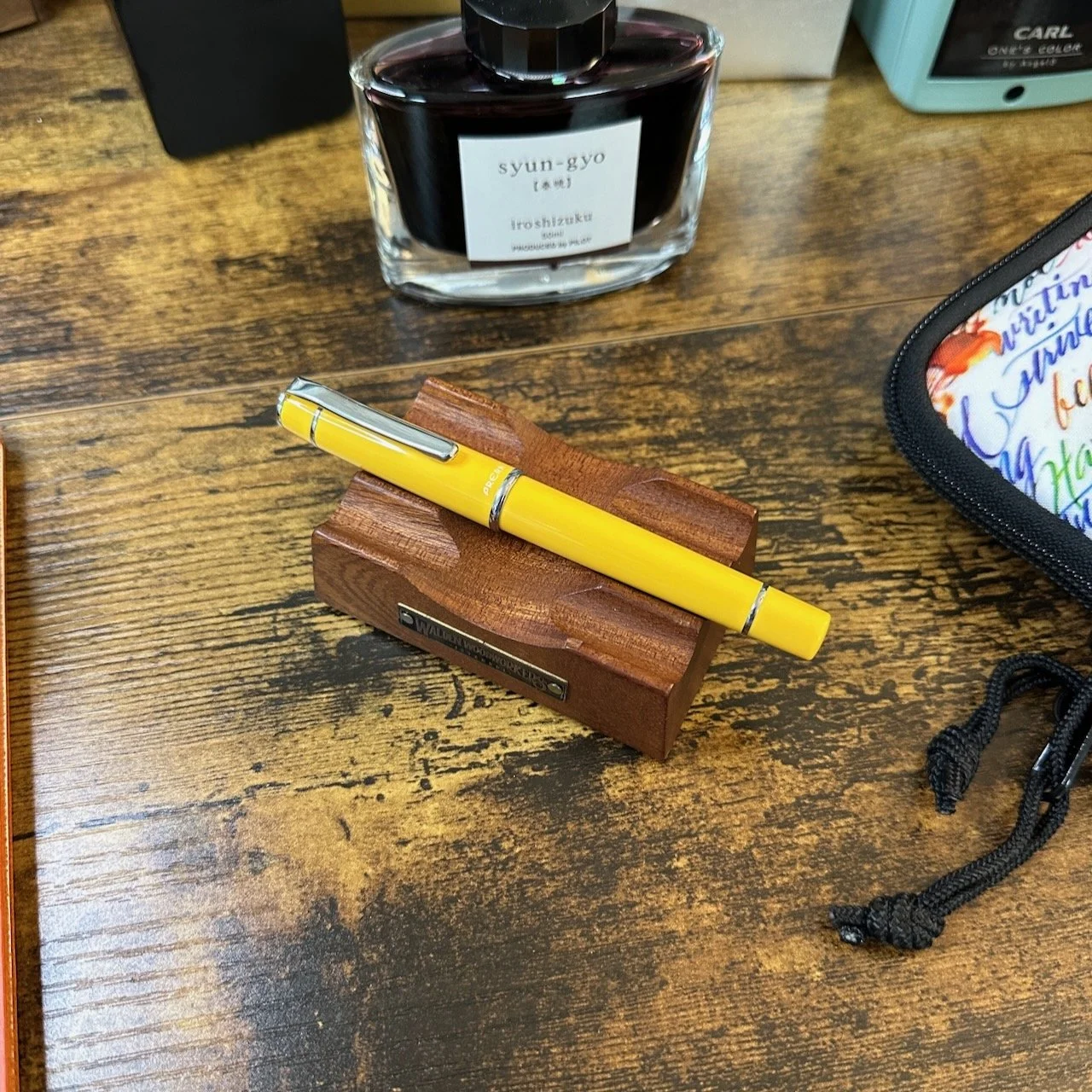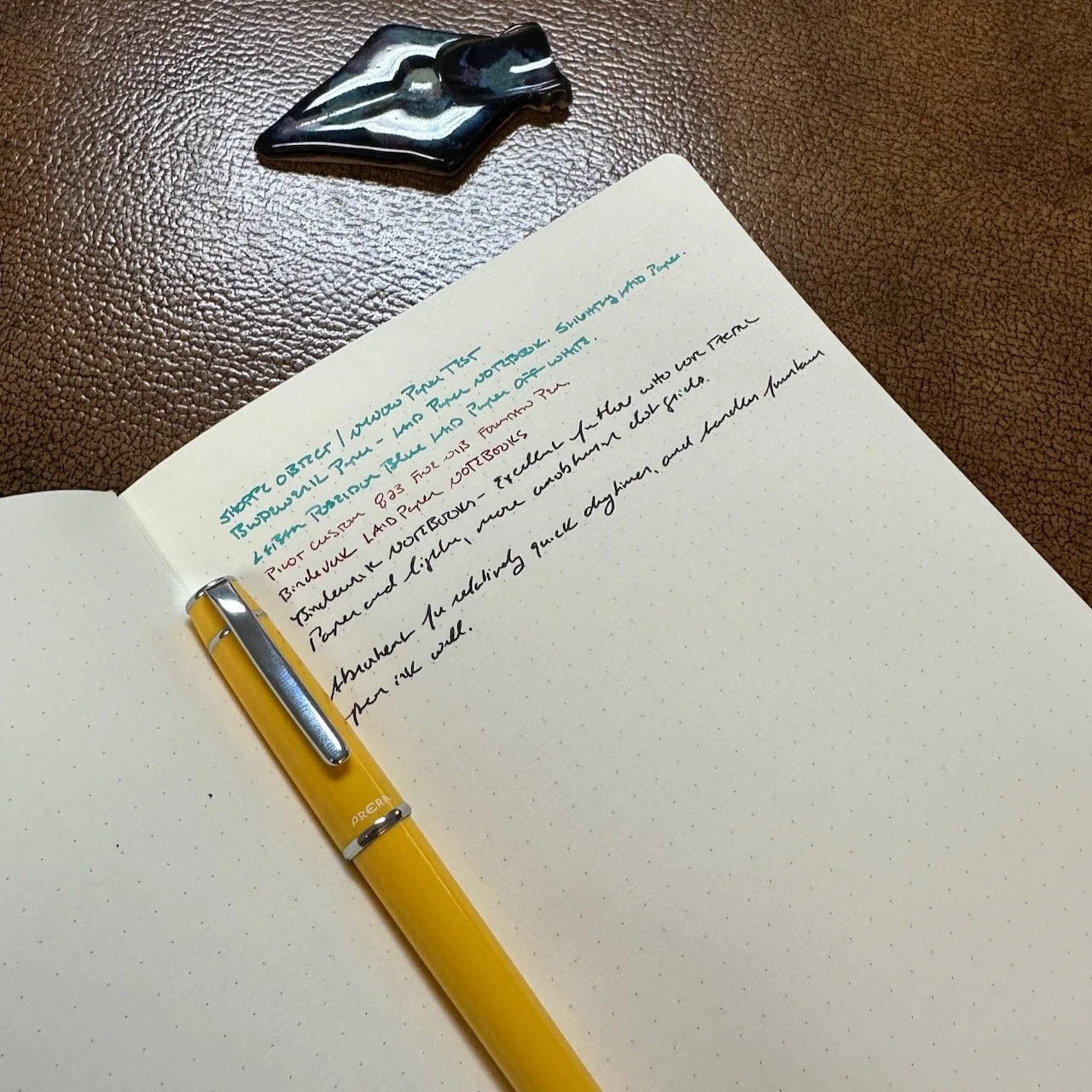Believe it or not, there is a very popular pen that I’ve never reviewed, and that pen is the Pilot Prera. The Prera has been around for years, and often recommended as a solid “next step” option for those upgrading from a pen like the Pilot Kakuno, Metropolitan, Explorer or other basic “entry level” pen. The $50-75 price range can be pretty sparse, and the Prera has long been one of the stalwarts in this bracket.
Why have I never reviewed the Prera? Well, for years the Prera was only available to the U.S. market in a clear body style that never appealed to me enough to buy. Since I run a highly curated retail store, I never previously explored carrying the Prera since I tend to focus mostly on pens that strongly appeal to me personally and that I like to recommend. Was this 100% fair to the Prera? Probably not, but in any event, the recent release of four new solid colors (Porcelain White, Honey Yellow, Empress Teal, and Cinnamon Brown) caught my attention and prompted me to reconsider. I’ve been using a yellow Prera nearly exclusively for the past two weeks and I like it.
The Pilot Prera compared to a Kaweco Sport, Pilot Custom 74, and Tom’s Studio Wren. The Kaweco Sport and the Tom’s Studio Wren are what I would consider true pocket pens, while the Custom 74 is more full-size so you can see how they compare.
So what are my thoughts? For starters, I can see why this pen is popular. Compact fountain pens such as the Kaweco Sport, Sailor Pro Gear Slim, and Pilot E95s are favorites for a reason, in that they “carry small and write big”. While I wouldn’t put the Prera in the “pocket pen” category (it has a friction-fit cap), it’s small enough to be portable, and it would fit nicely with a planner or small organizer. Posted, the Prera is large enough for me to use comfortably for longer writing sessions, and I’ve used it to journal nightly without issue.
Though labeled a medium, the steel Prera nib could best be characterized as a “Fine Medium” nib, IMHO. It’s a perfect width for my own everyday writing.
Pilot’s main draw, in my experience, is the brand’s rock-solid reliability. The stainless steel medium nib on my Prera is a smooth writer and on the fine side for a medium steel nib, which I prefer. While not inexpensive at $64, the Prera does ship with both a cartridge and converter, so you’re able to use both Pilot cartridges and bottled ink out of the box.
Takeaways and Where to Buy
Though more expensive than the Metropolitan or Explorer, the Prera offers a more traditional flat-top format somewhat reminiscent of the Sailor Pro Gear or Pro Gear Slim. A reliable writer that will perform as expected, these pens are great for those seeking a fountain pen with a “professional” look, or simply a more compact writing instrument for use on the go. Personally, I think the new colors are outstanding, with Honey Yellow and Empress Teal being my favorites since they remind me of classic vintage pens. Cinnamon Brown is also more of a burgundy than a true brown, and not a color that you typically see from Pilot.
The Prera is priced at $64 and ships with a squeeze converter included. Currently available with either a fine or medium stainless steel nib, I understand that additional nib options are on the way, including a steel stub/italic that I look forward to trying out once it’s available. For now you can find the new Preras in our own shop, and we may consider adding the clear Prera’s going forward if there is enough interest.
Come see these pens in person! Visit our shop, currently open Thursday and Friday 1-6pm, and Saturdays 10-6pm. Check this page to keep up to date on our current hours, which may change depending on travel schedules during pen show season.




